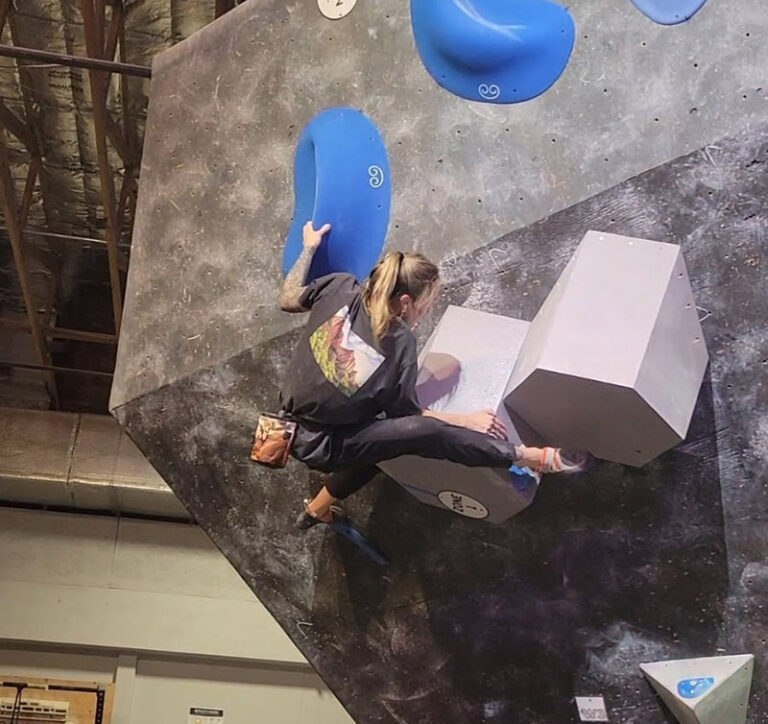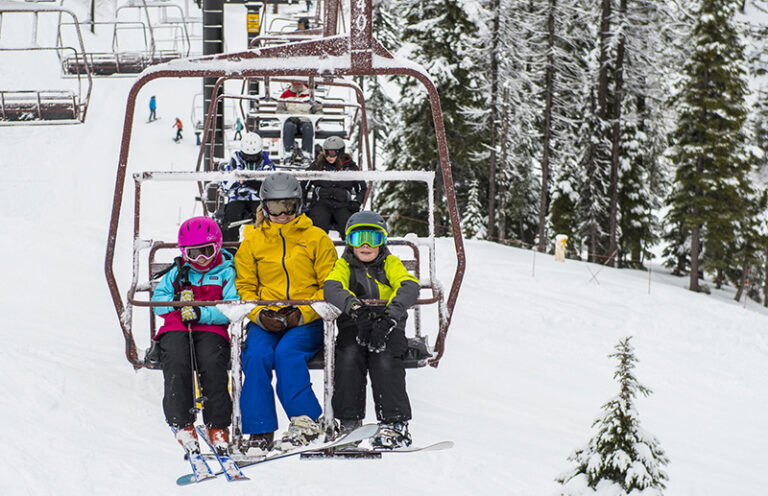DEMPSEY ORTEGA KNOWS TRAILS, and how to run them. After all, he grew up running on the National Park Service trails his father helped build as a ranger. These days, Ortega, the head coach of girls’ cross-country at North Central High School says he puts in four to six days a week running the trails around Spokane. To him, trail running isn’t just easy on the joints, or a healthy way to enjoy the natural surroundings, “it’s spiritually refreshing,” he says.
Trail running is a great way to keep in shape, says Ortega, whose running goals are more fitness- and occupation-based than competition-driven. He’s too busy organizing races, including this month’s Spokane River Run and meets for his high school athletes, to enter races himself.
Here’s the gear thet keeps him and his team going on rough spring trails:
SHOES: The Montrail Hurricanes XCR, a gore-tex lined shoe. “Athletes and runners in the area don’t necessarily use trail shoes,” he says, but Ortega emphasized the importance of aggressive treads on trail shoes in muddy conditions. For road running, he uses the ironically named Saucony Hurricanes. “I run in a road shoe ninety percent of the time because of the lightness of the shoes and the way they feel, but now I’m using the Montrail Hurricanes because I know they’re going to keep my feet dry and give me traction.”
SOCKS: Defeet. “I use them for running because I like the kind that come up a little higher than the shoe,” he says.
SHIRT: Anything synthetic. “Cotton kills,” he says, but he spoke highly of the tech-y Sports Science shirts, which are given as premiums for the 25K and 50K finishers in the Spokane River Run. “It has a cotton feel but it still has the wicking and doesn’t hold in water. It’s good for trails because if a shirt’s too synthetic and you get it in contact with Velcro from your watch or a tree branch, it just rips.”
VEST: A Nike or a Moonstone water-repellent, nylon-type vest. “Layering is important,” he says, but he usually wears only a long-sleeved synthetic shirt with the vest to keep from overheating.
PANTS: “A baggy type of tights,” by Nike or Sporthill. “Sporthill is a company out of Eugene, OR, and they know the climate in the Northwest, so for winter especially they know what they’re doing.”
GLOVES: Scirus, “only in the winter.”
GLASSES: Ortega wears light-colored lenses on a regular basis, usually Ray-bans with a yellow tint.
HAT: Nike driFIT hats, summer and winter, “unless it’s really cold, and then I wear a stocking cap.”
WATER BOTTLE: “For a run over about an hour and a half, or if I know there won’t be a water source, it’s important to take water.” Ortega uses the Amphipod waist pack and oval-shaped water bottle.
GADGETS: As a high school running coach, it pays not to get lost. Ortega often runs with a Garmin forerunner. “I have the older version, the 201. It’s a GPS unit that can be worn on the wrist and it’s not much bigger than a lot of watches.” He uses it to mark the distance he’s run as a coaching reference, or when he’s in unfamiliar territory.
Ortega has also been known to run with a heart-rate monitor, a cell phone, a watch, and an mp3 player. “Flash drive mp3 players are fantastic because no matter how much you jar them, they’ll work.”
Each gadget has its use, he says, but trail running is best enjoyed without the comforts of modern gadgetry. His passion for trail running originates in the purity of the sport: “I want the [students] to appreciate running and realize that twenty or thirty years after high school they can go out for a run and enjoy it while enjoying nature,” he says.













